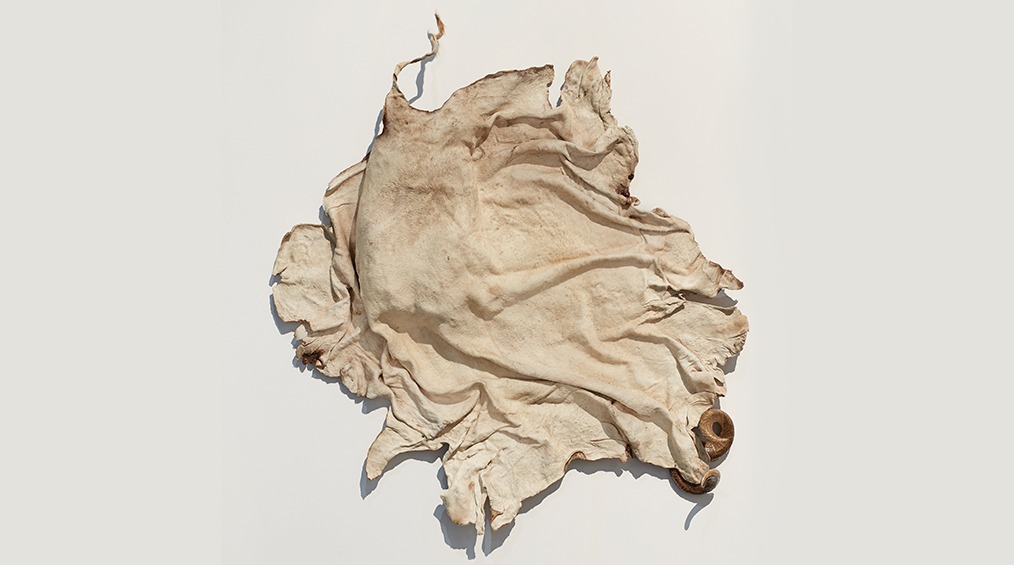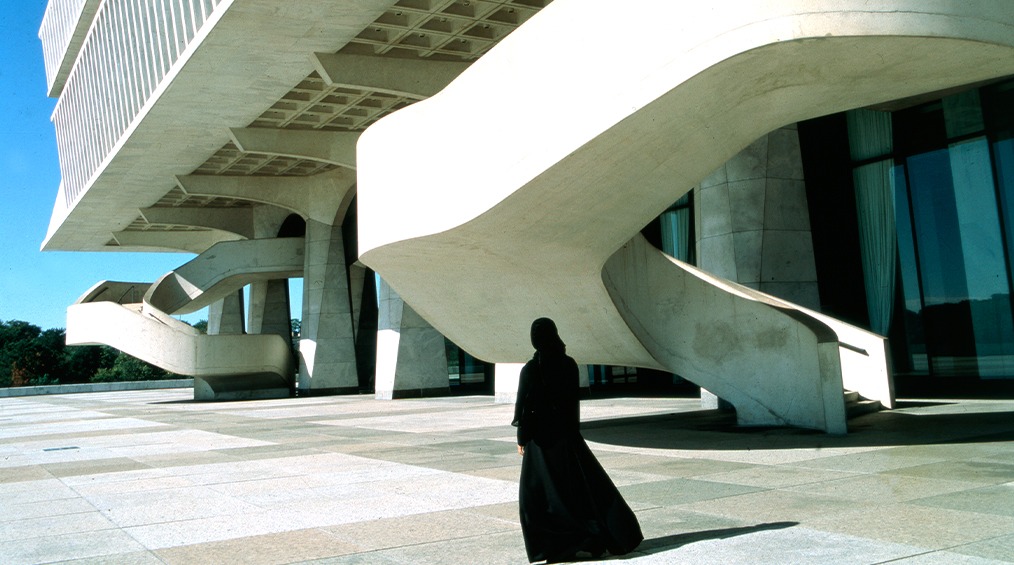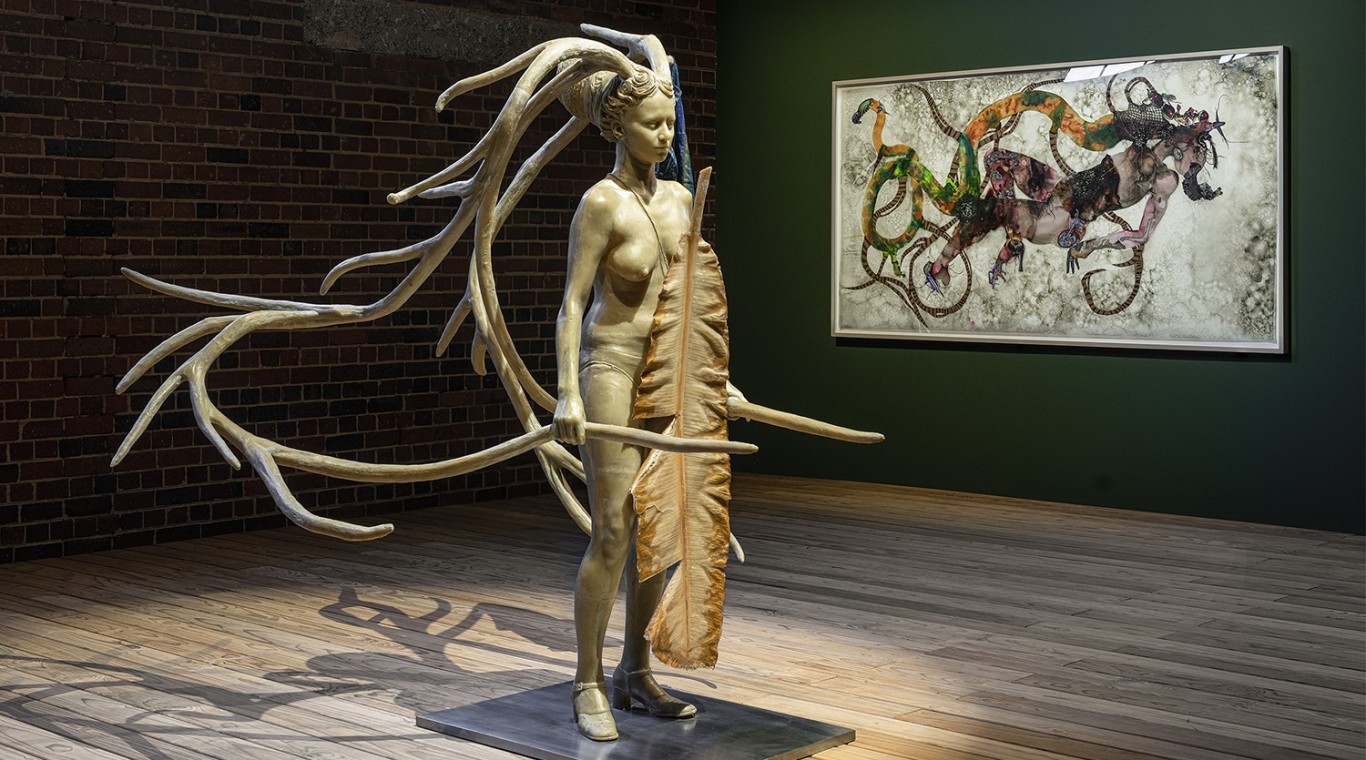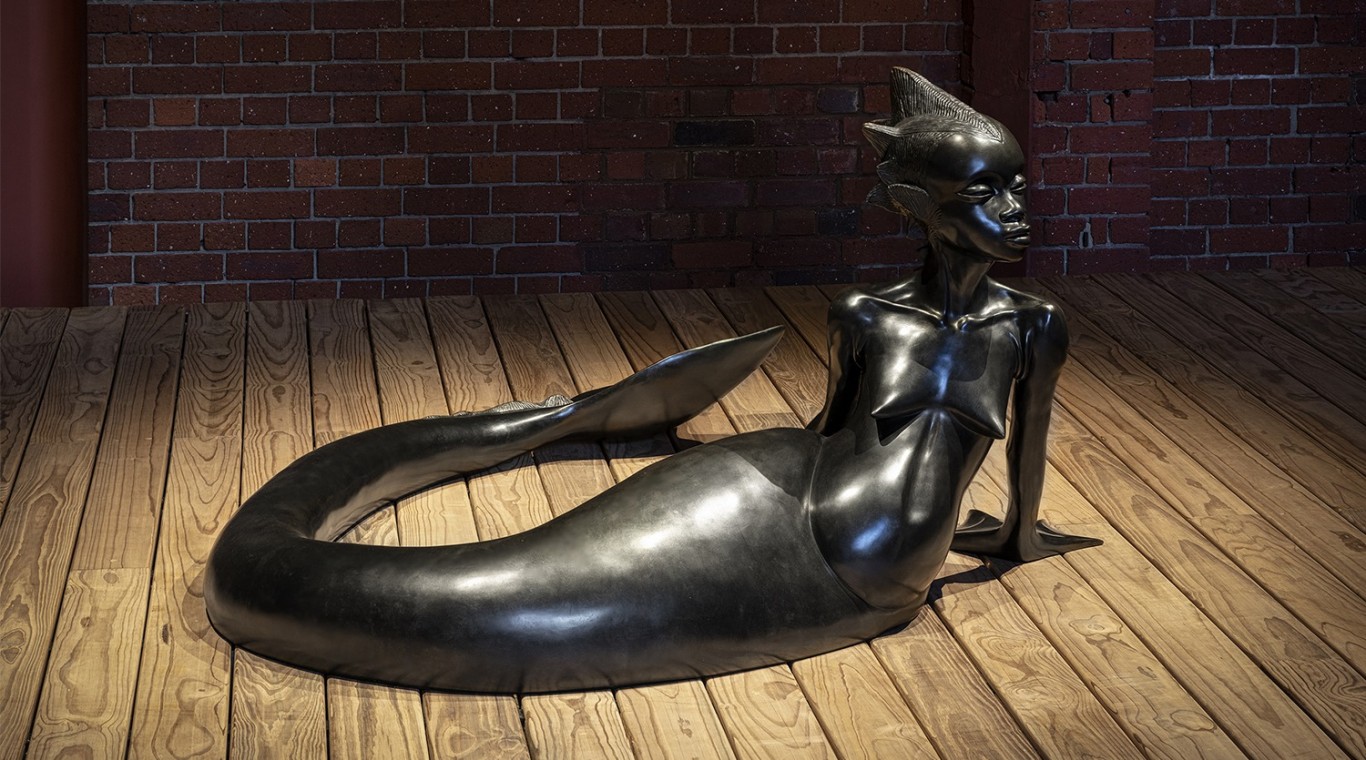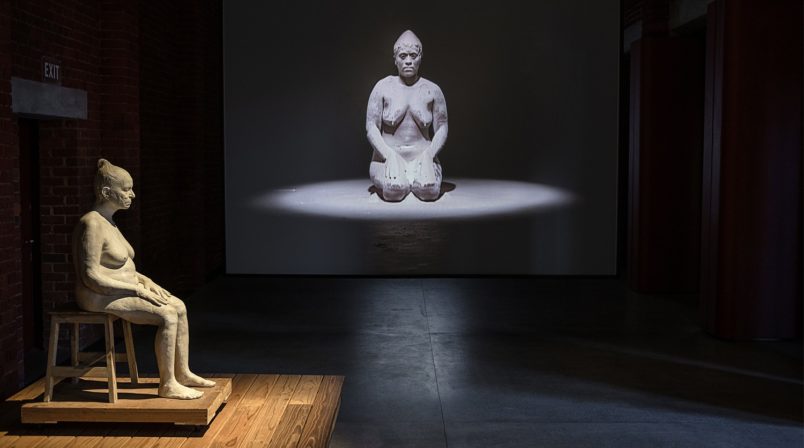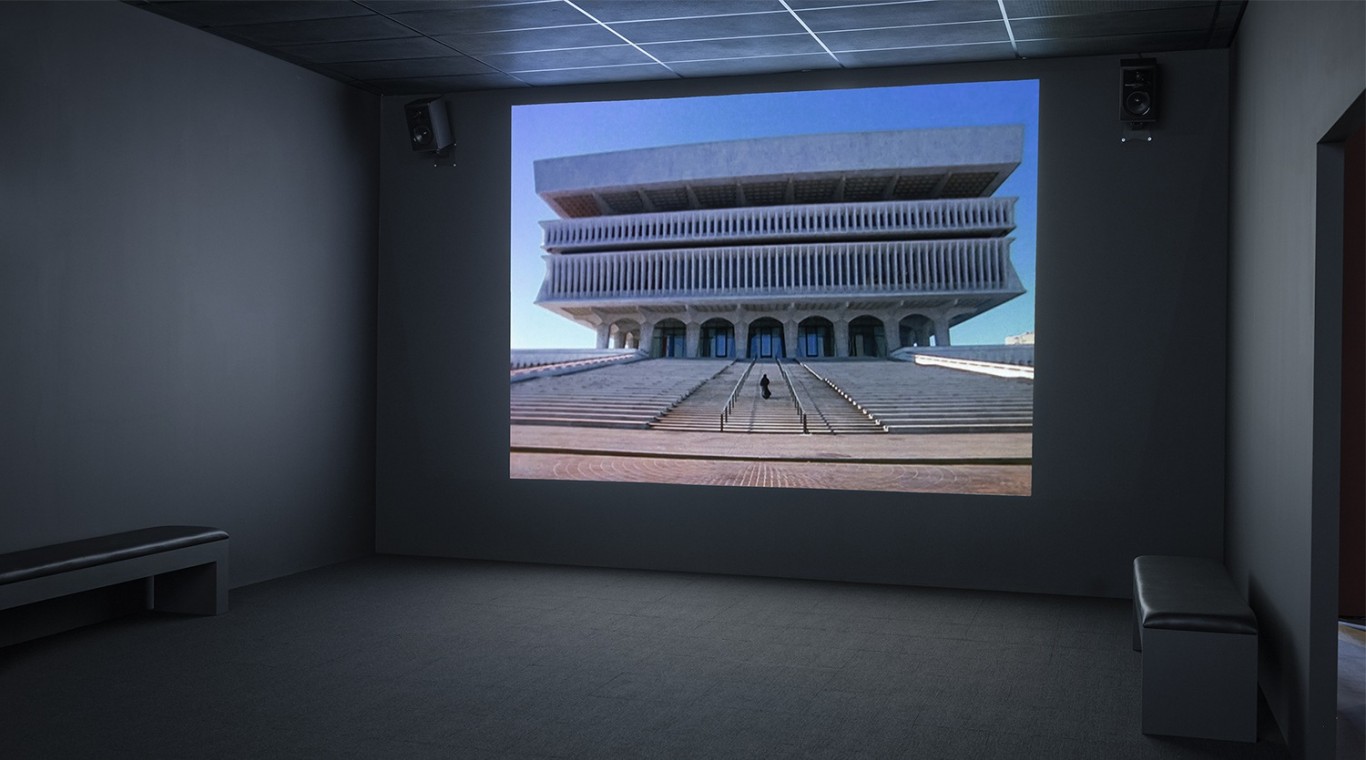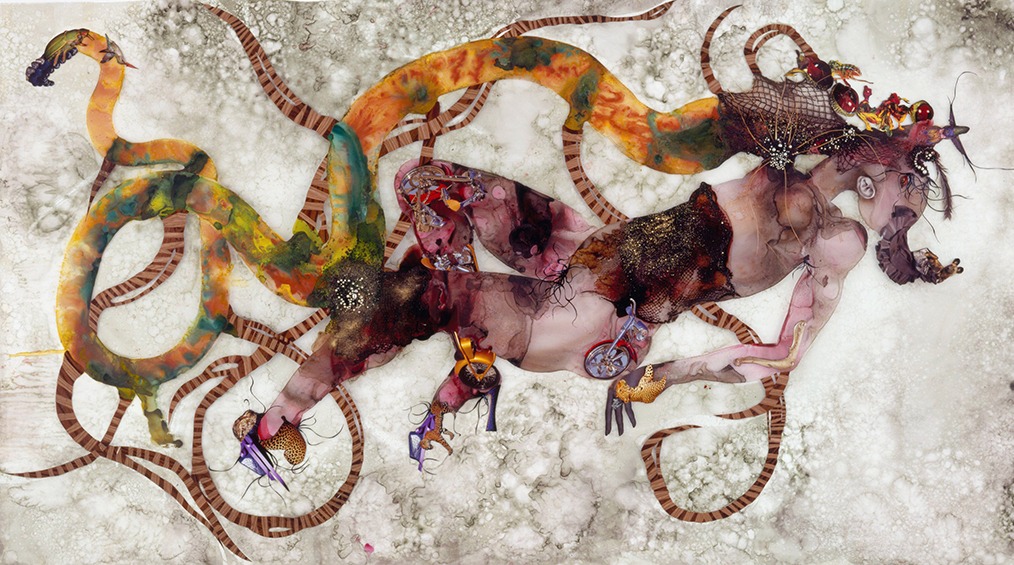ART-PRESENTATION: Contemporary Female Identities In the Global South
 The exhibition “Contemporary Female Identities In the Global South” proposes a realm in which these subjects explore worlds of their own choosing, in which they might be mother, martyr, warrior or hybrid. The exhibition design presents three other-worldly or dream-like spaces, connected by metaphorical ‘bridges’ that nonetheless draw attention to the constructedness and tangibility of the exhibition environment.
The exhibition “Contemporary Female Identities In the Global South” proposes a realm in which these subjects explore worlds of their own choosing, in which they might be mother, martyr, warrior or hybrid. The exhibition design presents three other-worldly or dream-like spaces, connected by metaphorical ‘bridges’ that nonetheless draw attention to the constructedness and tangibility of the exhibition environment.
By Efi Michalarou
Photo: Joburg Contemporary Art Foundation Archive
The exhibition “Contemporary Female Identities In the Global Soutη” is divided into three areas or worlds. The first is configured around the Fall which evokes the biblical story of the Garden of Eden, a realm where the natural and human worlds meet. The animal-human hybrid figures represent the second world of the exhibition. Hybridity refers to the mingling of species, races or cultures, a crossing of one thing with another. These figures are both abject and powerful, beautiful and repulsive. This uncomfortable ambivalence is meant to provoke a response in the viewer, who must consider the relationship between themselves and other, different subjectivities. In the third world of the exhibition, the viewer is reminded that the body is real and embedded in race, religion and identity. They offer an intimate depiction of women, who are transformed by the aging process, or whose faces are concealed behind Farsi calligraphy or veils of Belgian lace. In “Snow White” (2001), Berni Searle sits under a stream of flour that eventually covers her brown skin turning it white. By changing the color of her skin, Searle highlights the inherent problem with using racial categories and classification as an organising principle. Projected onto two screens and filmed from different angles, Searle finally claims her body back by wiping the flour off and onto the floor. The video concludes with the artist kneading dough on the floor, now wet with water that we hear dripping from above. Making her own body available, the work takes us through a cycle of visibility and erasure. The final act of kneading is a demonstration taking charge of her own identity by refusing erasure. Shirin Neshat’s “Soliloquy” (1999) is projected on dual screens facing one another. The artist is split across the two screens: in one she is seen journeying through Mardin, Turkey (at its border with Iran) and in the other she is in Albany, New York. This work depicts Neshat at the intersection of these two cultures. Hard to forget is the exchange between the two screens – when Neshat is animated on one side, she side stands still on the other making eye contact with herself and the viewer. When dealing with this work, the application of double-consciousness could be useful; the two-ness that Neshat experiences from the chasm between home and diaspora, belonging in neither, and the personal longing for a place she can’t return. Her works are culled from her personal life and are a reflection of an artist in exile – navigating space, occupying it and having to leave it all behind. The intensity of the stare is also felt in “Europa” (2008) by Nandipha Mntambo. The photographic work shows a half-animal, half-human, hybrid creature modeled on Mntambo herself and makes references to the Greek myths of Europa and Zeus. The hybrid presence in her works is a characteristic of her practice and appears in her photography and sculpture over several bodies of work. In Mntambo’s work hybridity is a vehicle for the paradox of female beauty and ugliness, and the alluring and the repulsive. The hybrid appears again in Bharti Kher’s “Self Portrait” (2017), a photographic work where the artist adds baboon features to her own portrait. Interested in the complexities of human experience, Kher uses the hybrid in this instance as a metaphor for the parallels between how society treats animals and how it marginalises people who are different. The artist was born to Indian parents in London, and now living and working in New Delhi, she is familiar with feelings of hybridity or mixedness. The hybrid in the portrait returns the gaze perhaps as a signal of resistance and the woman asserts her presence to reclaim her subjectivity. This ape hybrid is just one of the characters that appears in Kher’s cast of characters which includes cast female forms. Wangechi Mutu’s “Water Woman” (2017) is a bronze cast sculpture of a nguva, a water-woman, that exists both on land and in water. It is influenced by coastal East African mythologies of a siren, a female, fish-like creature that utilises her power to drag people, especially men, into the ocean. Mutu finds this myth powerful because in the face of traditional patriarchal cultures at the coast of Kenya.
Photo: Berni Searle, Lament IV (2011). © Berni Searle, Image courtesy the artist
Info: Curator Clive Kellner, Joburg Contemporary Art Foundation, Forest Town, No 1 Durris Road, Johannesburg, Duration: 16/9/2020-30/1/2021, Days & Hours: Tue-Sat 11:00-17:00, https://jcaf.org.za

